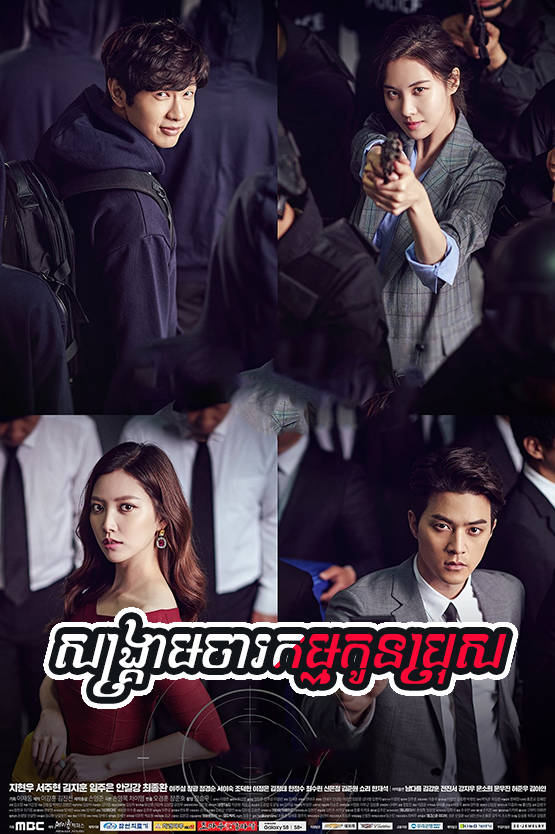Reatrey Thort Rub Louk Proling
The Midnight Studio (2024) Korean Drama – A Journey Through Healing and Connections
Korean dramas often find their way into the hearts of viewers by blending unique storytelling with heartfelt emotions. The Midnight Studio (2024) is one such series that leaves a lingering impression long after the credits roll. It does not rush, nor does it overwhelm with overly dramatic twists. Instead, it quietly takes its audience into a world where the living and the dead intersect, using themes of healing, acceptance, and human connection as its guiding light.
At its core, the drama introduces us to a late-night photography studio—an unusual place where souls of the deceased come to take their final portraits before moving on. The studio is run by Seo Ki-joo, a man burdened with a family curse, who has inherited the responsibility of capturing these fleeting moments. Each photograph is more than an image; it represents closure, memory, and the passage of time.

A Story That Blends Fantasy with Humanity
The premise of The Midnight Studio may sound like fantasy at first glance, but its execution feels deeply human. Every episode introduces a new story as souls arrive at the studio. Some come with regrets, others with gratitude, and many with unspoken words. Through their portraits, their lives are remembered, and their loved ones are given a chance to let go.
What makes this drama special is the way it avoids becoming morbid. Rather than focusing on death as an end, it highlights death as a transition and memory as something eternal. Viewers are not asked to dwell in sorrow but rather to reflect on the beauty of remembering someone fully, even in their final moments.
Seo Ki-joo – A Lonely Keeper of Memories
At the heart of the drama stands Seo Ki-joo, played with quiet depth and restraint. He is a man who has lived most of his life carrying a curse tied to the studio. His role is not one of choice but of destiny, and this burden often leaves him isolated from others. He is serious, disciplined, and perhaps even cold at times, but underneath lies someone who yearns for warmth and connection.
His interactions with the souls who visit the studio slowly reveal his own longing. With every story he witnesses, Ki-joo begins to reflect on his own life and regrets. Watching him change—subtly, almost imperceptibly—becomes one of the drama’s most rewarding aspects. It is not a sudden transformation but a gradual softening, showing how human contact, even with the departed, can reshape someone’s outlook on life.
Han Bom – A Source of Light
Counterbalancing Seo Ki-joo’s somber existence is Han Bom, a passionate lawyer who becomes involved in the affairs of the midnight studio. Where Ki-joo is quiet and bound by duty, Han Bom is spirited, determined, and empathetic. Her entry into the story brings color to the muted tones of the studio, offering warmth not just to Ki-joo but also to the audience.
Their dynamic is gentle and slow, never forced. Han Bom does not arrive as someone to “save” Ki-joo, but rather as someone who shares his burdens in her own way. Through her, viewers see the importance of empathy—how listening, supporting, and standing by someone can create healing without the need for grand gestures.
Episodic Yet Meaningful Narratives
One of the strengths of The Midnight Studio lies in its episodic storytelling. Each soul that enters the studio has a unique narrative, often encapsulating universal themes such as family, forgiveness, lost love, or unspoken gratitude. These mini-stories add variety and emotional depth, ensuring that every episode offers something memorable.
Some stories are heartwarming, like those of families reconciling through a final photograph. Others are bittersweet, reminding viewers that not every life concludes neatly. In all cases, the studio becomes a quiet stage where emotions that were left unsaid can finally be expressed. These episodic tales feel like short poems—each different in rhythm, but all resonating with sincerity.
Themes of Healing and Letting Go
Beyond its supernatural elements, the drama is ultimately about healing. It encourages viewers to confront grief not with denial but with acceptance. The photographs taken at the studio symbolize not just memories but also closure—a final recognition that a person lived, mattered, and left behind traces of love.
For the living characters, especially Ki-joo and Han Bom, each story serves as a mirror to their own struggles. By watching others say goodbye, they learn to embrace their own wounds and find courage to move forward. The message is subtle but powerful: healing does not come in sudden revelations, but in small, consistent acts of remembering, acknowledging, and letting go.
A Calm and Poetic Atmosphere
Stylistically, The Midnight Studio avoids the loud, flashy pacing that some fantasy dramas lean into. Instead, it creates an atmosphere that is calm, contemplative, and almost poetic. The lighting of the studio is often dim yet warm, evoking a sense of timelessness. The camera lingers on faces, allowing emotions to settle in, rather than rushing to the next scene.
The music, too, plays a key role. Soft piano melodies and delicate instrumentals underline the emotional beats without overwhelming them. It feels as though the soundtrack itself is whispering, “Pause. Reflect. Breathe.” This gentleness makes the drama particularly suitable for viewers seeking something comforting rather than adrenaline-driven.
A Reflection for the Audience
What makes The Midnight Studio so engaging is not just its story, but the way it naturally encourages self-reflection. As viewers watch strangers come to terms with farewells, they may find themselves thinking of their own relationships, their own memories, and the people they may have lost or still hold close.
The drama does not lecture or impose; it simply presents stories, and in doing so, it opens a quiet space for contemplation. Many may find themselves wiping away tears, not from sadness alone, but from the warmth of being reminded that love, once shared, never truly disappears.
Conclusion – A Gentle Companion in Storytelling
The Midnight Studio (2024) is more than a fantasy drama—it is a meditation on life, memory, and the quiet connections that bind people together. It does not demand your attention with cliffhangers or overwhelming drama, but rather invites you to sit, watch, and feel alongside its characters.
Its calm storytelling, paired with heartfelt performances and thoughtful themes, makes it a drama that resonates deeply. For those who appreciate narratives that are not hurried but instead gently unfolding, The Midnight Studio offers exactly that: a reminder that healing takes time, love leaves traces, and goodbyes can also be beginnings.











